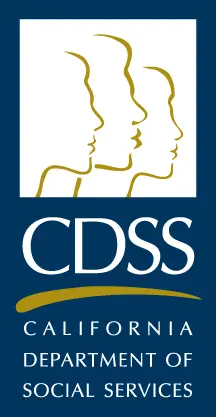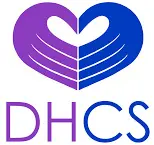Post Traumatic Stress Disorder (PTSD) is a mental health condition that emerges after someone endures significant traumatic events. It’s a multifaceted disorder extensively understood by medical professionals. However, even with this comprehensive understanding, a gap remains in the broader public’s awareness. This lack of knowledge has resulted in PTSD stigma. According to the U.S. Department of Veterans Affairs, about 6 out of every 100 people will experience PTSD at some stage. This statistic underscores the importance of bridging the knowledge gap, considering the significant number of individuals directly affected by the condition and its associated stigma.
What is PTSD Stigma?
PTSD stigma is not just a combination of misunderstandings; it’s deeply rooted in entrenched misconceptions, societal prejudices, and, often, an evident lack of education about mental health. This blend of factors crafts a backdrop where those with PTSD often find themselves marginalized, misunderstood, or even unfairly judged.
Such adverse perceptions can take various forms. They might range from offhand comments suggesting someone should “just get over it” to more insidious forms like discrimination in the workplace. The repercussions of these stigmas are profound, influencing not just an individual’s sense of self-worth and ability to form social connections but also their willingness to seek much-needed medical assistance.
Interestingly, a study on the stigma associated with PTSD found that awareness of public stereotypes significantly influences individuals’ decisions to seek help, especially in the early stages of their condition. This finding highlights the urgency of addressing these stigmas – understanding and counteracting them is pivotal to building a more understanding and informed society.
The Origins of PTSD Stigma
To fully grasp the origins of PTSD stigma, we must delve into historical contexts and society’s evolving perceptions of trauma. Historically, psychological trauma, particularly in warfare, was grossly misunderstood. Soldiers returning from battlefronts with what was termed as “shell shock” or “battle fatigue” were often mislabeled as weak or lacking courage. They weren’t recognized for what they were: individuals grappling with the harrowing effects of war, including PTSD’s effects on the nervous system.
This historical backdrop has set the stage for modern misconceptions. Cultural norms prioritizing stoicism and ‘toughing it out’ further compounded the issue. The reluctance of many societies to address mental health openly has inadvertently perpetuated myths about PTSD. Such myths include beliefs that only ‘weak’ individuals develop PTSD or that people with PTSD are dangerous. Addressing these origins is crucial. By understanding where the stigma comes from, we can challenge and deconstruct these outdated and harmful beliefs.
Types of Stigma Associated with PTSD
Understanding PTSD entails grasping its symptoms and causes and recognizing the different stigmas that those with the condition might encounter. Primarily, there are two predominant types of stigma linked to PTSD:
Public Stigma
This stigma stems from society’s collective reactions and perceptions about individuals with PTSD. Derived from societal beliefs, public stigma is often propagated by myths, stereotypes, and sheer misinformation. The consequences of this stigma are manifold: individuals with PTSD might face workplace discrimination, avoidance of social situations, or even overt hostility in public spaces. Such reactions further alienate and marginalize those affected by PTSD.
Self-Stigma
While public stigma originates externally, self-stigma is an internal process. When those with PTSD absorb and believe the public’s negative perceptions about them, they develop self-stigma. This can be particularly damaging as it intensifies feelings of shame, worthlessness, and isolation. It can act as a formidable barrier, discouraging them from seeking treatment or sharing their experiences with others, thereby perpetuating their struggles in silence.
Addressing these stigmas is crucial in ensuring comprehensive support and understanding for those battling PTSD.
Consequences of PTSD Stigma
The negative impact of PTSD stigma is pervasive, influencing multiple areas of an individual’s life, from personal relationships to professional pursuits:
- Hesitation in Seeking Treatment: One of the most immediate consequences of PTSD stigma is the hesitancy to seek professional help. Concerns about being stigmatized, labeled, or misunderstood can deter individuals from accessing vital therapeutic resources and interventions.
- Social Withdrawal: The weight of societal judgment can be heavy, causing many with PTSD to distance themselves from close friends, family, and community. Over time, this withdrawal can lead to a profound sense of loneliness and isolation.
- Discrimination in Professional and Personal Arenas: Misinformed beliefs about PTSD can seep into professional environments and personal domains. Employers might unfairly question an individual’s capability or reliability based on their condition. Similarly, landlords might harbor reservations, making housing accessibility a challenge.
- Intensified Mental Health Challenges: Constant exposure to stigmatizing attitudes doesn’t just affect social interactions; it directly impacts an individual’s mental well-being. As they navigate these prejudices, their PTSD symptoms might become more pronounced, and they might develop additional mental health issues like depression, anxiety, or feelings of low self-worth.
Understanding these consequences is essential for society to recognize the importance of combating PTSD stigma and fostering an environment of acceptance and support.
PTSD in Different Communities
Stigma doesn’t manifest uniformly; its intensity and nature can vary widely based on cultural, ethnic, and occupational contexts.
- Military Veterans: Veterans are significantly affected by PTSD due to the traumatic nature of their roles. Statistics reveal that up to 23% of veterans returning from Iraq and Afghanistan may suffer from PTSD. However, the military’s emphasis on strength and stoicism can make it difficult for many veterans to seek help. Within this group, stigma may arise from fears of seeming weak or facing career setbacks.
- First Responders: Police, firefighters, and EMS personnel frequently witness traumatic events. However, the stigma in these communities can often mirror that of the military, where seeking help might be perceived as an inability to handle the job.
- Survivors of Assault or Abuse: Cultural norms can be particularly harsh on these survivors, with blame sometimes wrongly placed on the victim. This misplaced blame can intensify feelings of shame and guilt.
- Ethnic and Cultural Groups: Discussing mental health is taboo in many cultures. Admitting PTSD or any mental health issue might be seen as bringing shame to the family. The lack of cultural understanding or acceptance can deter individuals from these backgrounds from seeking help.
Highlighting these variances underscores the need for a tailored, understanding approach to combating PTSD stigma in each unique community.
Addressing PTSD Stigma
Combatting the stigma associated with PTSD requires concerted efforts across various spheres. A multifaceted approach is crucial to making meaningful change:
- Awareness Campaigns: A significant factor in dispelling misconceptions is providing accurate and comprehensive information about PTSD. Numerous organizations, from mental health institutions to advocacy groups, have initiated campaigns that illuminate the realities of PTSD. These campaigns aim to dispel prevalent myths and offer scientifically-backed facts, ensuring that the narrative around PTSD is rooted in truth rather than baseless stereotypes.
- Education: Knowledge is a potent tool against ignorance. Integrating PTSD education into various arenas – from school curriculums to professional training programs – can make a significant difference. By informing students, professionals, and the broader public about PTSD’s complexities, we can reshape entrenched perceptions. This not only promotes empathy but also equips individuals with the tools to support those affected.
- Storytelling and Advocacy: Personal stories hold a unique power in changing hearts and minds. When individuals with PTSD share their journeys, challenges, and triumphs, they provide a human face to a condition often obscured by stigma. Personal testimonies and advocacy work in tandem to break down barriers of misunderstanding, fostering a deeper connection and empathy within the community.
By combining these efforts, society can move towards a more informed, compassionate, and supportive stance on PTSD, mitigating the harm caused by enduring stigmas.
PTSD Treatment – Acera Health
For those grappling with PTSD, finding the right environment for healing is crucial. At Acera Health, our residential inpatient facility is tailored to provide comprehensive care for individuals with mental health conditions, including PTSD. Our team understands the nuances of PTSD, its associated stigmas, and the challenges patients face. We are dedicated to guiding our patients toward a brighter, stigma-free future through therapy, community support, and holistic treatments. To learn more about how Acera Health can be a beacon in your journey to wellness, please contact us today.









